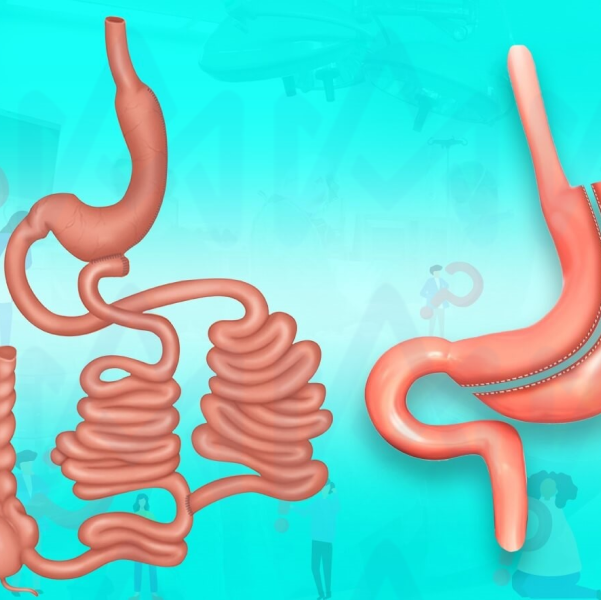Working Hours
| Mon | 08:00 - 18:00 |
| Tues | 08:00 - 18:00 |
| Wed | 08:00 - 18:00 |
| Thurs | 08:00 - 18:00 |
| Fri | 08:00 - 18:00 |
| Sat | Closed |
| Sun | Closed |
Send Message
Contact Information
VM Medical Park Maltepe Hastanesi Cevizli, Bağdat Cd. No:547, 34846 Maltepe/İstanbul
Working Hours
-
Mon:
08:00 - 18:00
Tues: 08:00 - 18:00
Wed: 08:00 - 18:00
Thurs: 08:00 - 18:00
Fri: 08:00 - 18:00
Sat: Closed
Sun: Closed
Contact Information
-
GSM: +905335506493
- info@mustafaatabey.com
Transit Bipartisyon

Transit Bipartition
Popularly known as “Diabetes Surgery” also known as “Transit Bipartisyon” surgery, obesity accompanied by Type 2 diabetes patients that can be applied to a surgical procedure. In this surgical procedure, first of all, sleeve gastrectomy (tube stomach) procedure is performed on the patient. The tube created is slightly larger than that of the traditional sleeve gastrectomy procedure. In the second stage, about 250 in cm, the small intestine is divided into two parts. The tube formed at the end of the small intestine close to the large intestine is sewn to the stomach, and the other end, which is idle, is joined in the last 150 cm section of the small intestine. Thanks to this procedure, the food eaten will quickly reach the middle part of the small intestine, so the receptors located in this part cause a feeling of satiety to be provided quickly in the body. In addition, since the nutrients will have passed through all the parts of the small intestine, the risk of absorption problems will be eliminated. On average, one third of the food consumed after this surgery passes through the twelve finger cup, and the rest passes through the second path opened in the stomach.
What is Transit Bipartition?
First used by a surgeon in 2006, this method has made significant progress in the treatment of both diabetes and metabolic diseases. It is a well-known fact that the underlying cause of obesity is insulin resistance, and insulin resistance is also the main cause of type 2 diabetes. And the only way to break this cycle is also metabolic surgery it is accepted by everyone that it is.
How is Transit Partitioning Applied in Type 2 Diabetes?
Transit bipartition surgery performed for the purpose of treatment in type 2 diabetes is performed using the laparoscopic method, which is called the closed method. The operation consists of two parts. Firstly laparoscopic stomach reduction surgery with the tube, the stomach operation is performed. The reason for this application is to control the excessive appetite in the person. In the second part, the last 250 cm section of the small intestine is joined side by side to the lower end of the stomach. Thus, by combining the technique of gastric bypass surgery with tube stomach surgery, the patient's appetite is controlled while the patient secretes the hormone insulin from his pancreas and controls the blood sugar level at the same time. Although the surgery may seem very complicated, thanks to this technique, patients can lose weight in a healthy way by getting rid of sugar medications and insulin injections.
This technique has some advantages over the patient. We can list them as follows;
- Obesity disease between 75-90% success has been observed.
- The patient completely gets rid of sugar medications and insulin injections.
- Since no part of the intestine is disabled, the absorption of minerals such as iron is greater than other obesity surgical procedures.
- The patient not only loses weight, but also gets rid of type 2 diabetes.
Because it has advantages such as this, transit bipartition surgery has often been preferred as a treatment for type 2 diabetes in recent years.
What are the Risks of Transit Bipartition Surgery?
- As with any surgical procedure, there is a possibility of bleeding.
- There may be leakage in the connected areas.
- The possibility of developing an embolism is also present in this, as after each operation.
All these possibilities are a 2% to 10% risk. Your doctor will definitely talk to you about these risks, which are very little visible, and give you detailed information before surgery.
Am I eligible for stomach reduction surgery?
If you have insulin resistance in addition to obesity disease and you have type 2 diabetes, you may be a suitable candidate for transit bipartition.
How many days will I stay in the hospital after Transit Bipartition surgery?
you will be discharged from the hospital within 3 to 5 days.
When can I return to work after Transit Bipartition surgery?
Starting from the second week following the surgery, you can return to work according to your recovery status.
How should I eat after Transit Bipartition Surgery?
Your doctor will inform you in detail about this. However, to give brief information, you will need to feed in a liquid way in the first days. In the following days, you can continue to eat light foods that will not disturb your intestines.
Is the Transit Bipartition Surgery performed with epidural anesthesia or with general anesthesia?
In some hospitals, it can be performed with combined anesthesia, as well as only general anesthesia can be performed on the horse. The most preferred is general anesthesia.
How much weight can I lose with Transit Bipartition Surgery?
It should be remembered that the only purpose of this surgery is not to lose weight. The main goal is to treat diabetes. However, if you pay attention to your diet and eat healthy, you can also reach your ideal weight if you make sports a part of your life.
At what age can Transit Bipartition Surgery be performed?
People with a body mass index of 40 and above and who have diabetes are eligible for this surgery if they have reached the age of 18. The upper age limit is 65 and can also be applied to older people who are able to remove the surgery. The doctor who examines you will make the most correct decision.
How much weight does it take to have Transit Bipartition Surgery?
The person must have a body mass index of 45 and above.
What are the advantages of Transit Bipartition Surgery?
The biggest advantage of this surgery is that it treats diabetes. In addition, since the entire small intestine is used, iron and vitamin absorption is greater than other metabolic surgical procedures, vitamin deficiency is experienced less or not experienced than others.

.svg.png)




